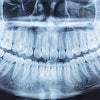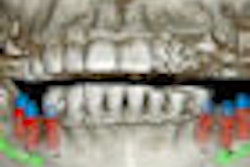The American Association of Endodontists (AAE) and the American Academy of Oral and Maxillofacial Radiology (AAOMR) have jointly developed a position statement on the use of cone-beam CT (CBCT) in endodontics.
This document, which will be revised periodically to reflect new evidence, is intended to provide scientifically based guidance to clinicians regarding the use of cone-beam CT in endodontic treatment as an adjunct to planar imaging.
According to the AAE and AAOMR, this 3D imaging modality should only be used when the question for which imaging is required cannot be answered adequately by lower-dose conventional dental radiography or alternate imaging modalities.
They recommend that the use of cone-beam CT in endodontics should be limited to the assessment and treatment of complex endodontic conditions, such as the following:
- Identification of potential accessory canals in teeth with suspected complex morphology based on conventional imaging
- Identification of root canal system anomalies and determination of root curvature
- Diagnosis of nonendodontic origin pathosis to determine the extent of the lesion and its effect on surrounding structures
- Intra- or postoperative assessment of endodontic treatment complications, such as overextended root canal obturation material, separated endodontic instruments, calcified canal identification, and localization of perforations
- Diagnosis and management of dento-alveolar trauma, especially root fractures, luxation and/or displacement of teeth, and alveolar fractures
- Localization and differentiation of external from internal root resorption or invasive cervical resorption from other conditions, and the determination of appropriate treatment and prognosis
- Presurgical case planning to determine the exact location of root apex/apices and to evaluate the proximity of adjacent anatomical structures
- Dental implant case planning when cross-sectional imaging is deemed essential based on the clinical evaluation of the edentulous ridge
"All radiographic examinations must be justified on an individual needs basis whereby the benefits to the patient of each exposure must outweigh the risks," the joint position statement concludes. In addition, limited field-of-view cone-beam CT systems can provide images of several teeth from approximately the same radiation dose as two periapical radiographs, which may result in a dose savings over multiple traditional images in complex cases.
Copyright © 2010 DrBicuspid.com



















